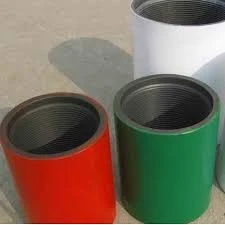- Afrikaans
- Albanian
- Amharic
- Arabic
- Armenian
- Azerbaijani
- Basque
- Belarusian
- Bengali
- Bosnian
- Bulgarian
- Catalan
- Cebuano
- Corsican
- Croatian
- Czech
- Danish
- Dutch
- English
- Esperanto
- Estonian
- Finnish
- French
- Frisian
- Galician
- Georgian
- German
- Greek
- Gujarati
- Haitian Creole
- hausa
- hawaiian
- Hebrew
- Hindi
- Miao
- Hungarian
- Icelandic
- igbo
- Indonesian
- irish
- Italian
- Japanese
- Javanese
- Kannada
- kazakh
- Khmer
- Rwandese
- Korean
- Kurdish
- Kyrgyz
- Lao
- Latin
- Latvian
- Lithuanian
- Luxembourgish
- Macedonian
- Malgashi
- Malay
- Malayalam
- Maltese
- Maori
- Marathi
- Mongolian
- Myanmar
- Nepali
- Norwegian
- Norwegian
- Occitan
- Pashto
- Persian
- Polish
- Portuguese
- Punjabi
- Romanian
- Russian
- Samoan
- Scottish Gaelic
- Serbian
- Sesotho
- Shona
- Sindhi
- Sinhala
- Slovak
- Slovenian
- Somali
- Spanish
- Sundanese
- Swahili
- Swedish
- Tagalog
- Tajik
- Tamil
- Tatar
- Telugu
- Thai
- Turkish
- Turkmen
- Ukrainian
- Urdu
- Uighur
- Uzbek
- Vietnamese
- Welsh
- Bantu
- Yiddish
- Yoruba
- Zulu
Compression Tube Couplers for Efficient Fluid Connections in Various Applications
Compression Tubing Couplers A Comprehensive Overview
In the realm of plumbing and tubing applications, the importance of connecting different sections of tubing cannot be overstated. Among the various types of connectors available, compression tubing couplers stand out due to their reliability, ease of use, and versatility. This article delves into what compression tubing couplers are, their applications, advantages, and some key considerations—providing a thorough understanding of this essential component.
What are Compression Tubing Couplers?
Compression tubing couplers are specialized fittings designed to join two pieces of tubing securely. They utilize a simple yet effective mechanism that includes a nut, a compression ring (also known as a ferrule), and a body. The principle behind their operation is straightforward when the nut is tightened, it compresses the ferrule against the tubing, creating a leak-proof seal. This design is particularly advantageous as it accommodates variations in tube size and material, making it suitable for a wide array of applications.
Applications of Compression Tubing Couplers
Compression tubing couplers are commonly used in various fields, including plumbing, HVAC (heating, ventilation, and air conditioning), automotive, and medical equipment. Their ability to create strong, leak-proof connections makes them an ideal choice in situations where fluid transfer is critical.
1. Plumbing In residential and commercial plumbing, compression couplers are frequently used to connect copper, plastic, or metal pipes. They provide a reliable method to ensure that water flow remains uninterrupted and leak-free, critical for maintaining building infrastructure.
2. HVAC Systems These couplers are vital in air conditioning and heating systems, facilitating the connection of refrigerant lines. Given the importance of maintaining specific pressures in these systems, the leak-proof integrity provided by compression couplers is essential.
3. Automotive Applications Compression couplers are often found in fuel lines and brake systems of vehicles. Their robust construction ensures they can handle fluctuations in pressure and temperature, making them invaluable in the automotive field.
4. Medical Devices In the medical industry, where precision and safety are paramount, compression couplers play a crucial role in connecting tubes for various devices, including oxygen delivery systems and intravenous (IV) administration sets.
Advantages of Compression Tubing Couplers
The design and functionality of compression tubing couplers offer numerous advantages
compression tubing coupler

1. Easy Installation One of the primary benefits of compression couplers is their straightforward installation process. No special tools are typically required, and they can be assembled quickly, reducing labor time and costs.
2. Versatility Compression couplers are compatible with a wide range of materials, including copper, PVC, and PEX. This versatility makes them suitable for various applications across different industries.
3. Reusability Unlike traditional soldered or welded connections, which may require cutting the pipe for disassembly, compression fittings can be easily unscrewed and reused. This feature is particularly advantageous during maintenance or modifications in systems.
Key Considerations When Using Compression Tubing Couplers
While compression tubing couplers are highly advantageous, certain considerations should be kept in mind
1. Material Compatibility It is essential to choose couplers that are compatible with the tubing material to avoid chemical reactions or degradation over time.
2. Proper Tightening Ensuring the right amount of torque is crucial; over-tightening can damage the tubing or the coupler, while under-tightening can lead to leaks.
3. Temperature and Pressure Ratings Different compression couplers have varying standards for temperature and pressure ratings; always check these specifications to prevent failures in critical applications.
Conclusion
In conclusion, compression tubing couplers are indispensable components in many plumbing and tubing systems, offering reliable, easy-to-install, and reusable solutions for joining different tubing sections. Understanding their function, advantages, and application areas can aid users in selecting the appropriate fittings for their needs. As technology continues to evolve, the design and materials used in compression couplers are also improving, promising even greater reliability and performance for future applications.
-
Tubing Pup Joints: Essential Components for Oil and Gas OperationsNewsJul.10,2025
-
Pup Joints: Essential Components for Reliable Drilling OperationsNewsJul.10,2025
-
Pipe Couplings: Connecting Your World EfficientlyNewsJul.10,2025
-
Mastering Oilfield Operations with Quality Tubing and CasingNewsJul.10,2025
-
High-Quality Casing Couplings for Every NeedNewsJul.10,2025
-
Boost Your Drilling Efficiency with Premium Crossover Tools & Seating NipplesNewsJul.10,2025







